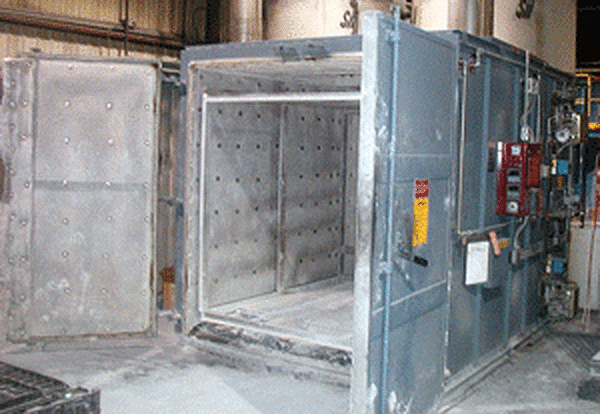Powder Coating Adhesion and Outgassing
How can I prevent outgassing of the hot-dip galvanized coating?

I am contemplating powder-coating some hot-dip galvanized steel to further increase its corrosion protection. I have heard some rumors regarding the adhesion of powder coatings on galvanized steel. Apparently the adhesion is compromised due to the zinc coating outgassing. Is there any truth to this? Is there anything I can do to prevent outgassing of the zinc coating?
Yes, outgassing of the zinc coating can occur when applying a powder coating over galvanized steel, but is preventable when the proper surface preparation techniques are used, a pre-bake is performed, and if good powder application practices are followed. Any zinc oxides, or other metal oxides, that remain on the surface of the galvanized steel can potentially retain air or moisture. Upon heating during the curing of the powder coating, these oxides may release water vapor or air, which can expand and penetrate the powder coating, causing blisters or voids that affect the adhesion and continuity of the powder coating. The galvanized coating may also release gas due to trapped air or water in the galvanized coating. Water or air may be able to penetrate small crevices within the outermost layer of the zinc and become trapped. When air or water becomes heated during the curing stages of the powder coating process, they can release through the powder coating in the form of gas to form a small crater or blister.
To reduce the potential for outgassing, it is essential to remove any surface oxidation with a light sweep blast and/or chemical cleaning. A light sweep blast (SSPC-SP 16 Brush-Off Blast Cleaning of Coated and Uncoated Galvanized Steel, Stainless Steels, and Non-Ferrous Metals) will remove metal oxides that have developed on the surface as well as open up surface cavities that have trapped air. Sweep blasting will also increase the surface profile of the steel. This promotes good adhesion between the steel and the powder coating. In conjunction with a sweep blast — or as a stand-alone treatment — a phosphate wash treatment can be employed to remove surface oxidation. This lightly-acidic solution will remove oxides from the surface as well as slightly etch the steel surface, providing a better surface profile for the top coating to adhere to. Proprietary solutions are available that are designed to work effectively on galvanized or other zinc surfaces.
Next, pre-baking in a drying/curing oven reduces the potential for the galvanized coating to outgas. This process will aid in the expulsion of any trapped air or water in the coating as well as ensure that the surface of the steel is free from any moisture. The pre-baking should be conducted at higher temperatures than the curing oven; this temperature is typically 65 F higher than the curing oven. If the galvanized steel is run through a phosphate wash prior to powder coating, it is recommended that the pre-bake oven temperature not exceed 535 F. Higher temperatures will deteriorate the thin phosphate coating, converting it into a powdery substance that could affect adhesion. The part should be pre-baked until the galvanized surface reaches the oven temperature. Typically, this is one hour to assure all moisture and entrapped gasses are expelled. The part should then be cooled to a temperature that allows application of the powder coating in accordance with the manufacturer’s instructions.

Powder coating should follow pre-baking as soon as possible so there is little or no time for zinc oxidation to begin. For curing of the powder coating, the oven temperature should be operated as low as possible to further reduce the potential for outgassing. Best results are achieved with lower oven temperatures and longer times as opposed to higher temperatures with shorter times. Not only will the lower temperatures inhibit gassing, but the longer curing times might lead to the resealing of any craters that may have formed. As the techniques for surface preparation and powder application are refined, the application of powder coatings over galvanized steel is becoming increasingly popular. The corrosion protection provided by this duplex system will extend the life of the galvanized coating by many years and will allow the galvanized coating to take on many different appearances.
© 2025 American Galvanizers Association. The material provided herein has been developed to provide accurate and authoritative information about after-fabrication hot-dip galvanized steel. This material provides general information only and is not intended as a substitute for competent professional examination and verification as to suitability and applicability. The information provided herein is not intended as a representation or warranty on the part of the AGA. Anyone making use of this information assumes all liability arising from such use.

